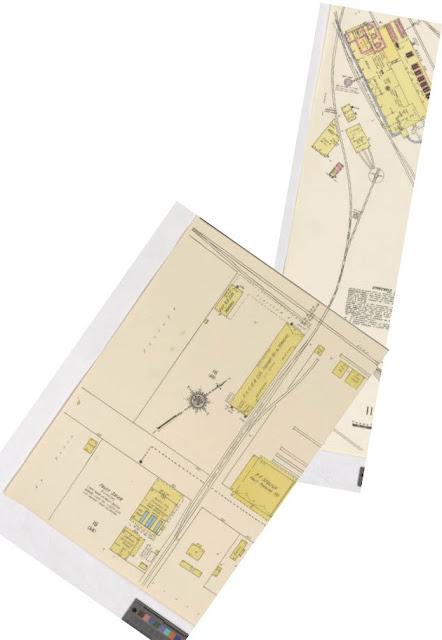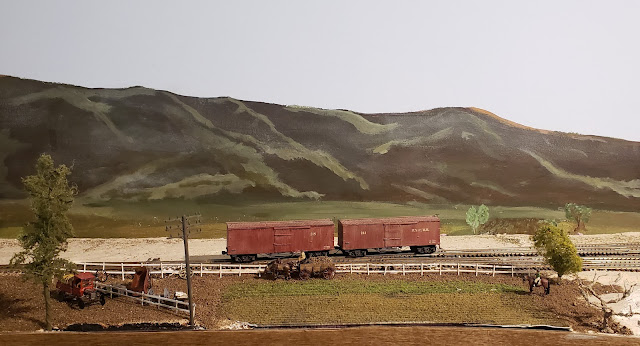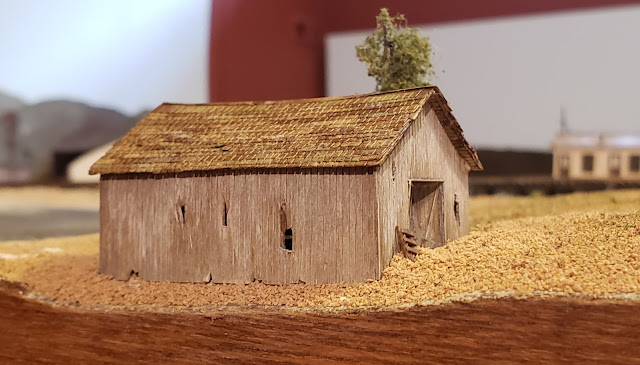Start With a Box Car
 |
Original box car drawing was found at Amesville Shops
|
For my first project on the PVCRR, I decided to build one of their simple narrow gauge box cars. I haven't been able to find too many pictures of these, but I have found a small handful that show the cars from various angles. Oddly, I was unable to find any images that show the side opposite of what is in the above illustration.
 |
Photograph found in Steinbeck Country Narrow Gauge, courtesy Monterey County Historical Society.
|
Because these cars were narrow gauge, and I am modeling in standard gauge, I decided my goal would be to create representations of these cars, rather than exact prototypical models. To do this, I began with a 36' truss-rod box car from Fine N-Scale.
 |
Fine N-Scale 36' Truss-Rod Wood Boxcar kit includes parts for two unique cars.
|
The kits are nicely detailed resin and metal kits, less trucks and couplers. The box car (and refrigerator car) kits come with two cars, etched metal roof walks, brake wheels, brake shafts, stirrup steps, and queen posts. The kits also include monofilament to use for the truss rods.
Assembly was fairly straight forward. I began with the underside of the car, by installing the queen posts with super glue. I opted to use fine wire for the truss rods, and drilled #75 holes in the included pilot holes. Once I was happy with their fit, I used super glue to attach them to the car floor.
 |
Photograph of Moss Landing after the 1906 earthquake found in Steinbeck Country Narrow Gauge, courtesy Amstar, Spreckels Collection.
|
Pictures I've found show that the roofs of these cars were constructed of wooden slats, with one beam laid directly on top for a roof walk. To model this, I used some Builders In Scale laser cut 6" planking, with nailheads, and a piece of Midwest Products Co. scale strip wood (a scale 12" wide). The hardest part of this step was ensuring that the nail heads all lined up with each other.
 |
Moss Landing after the 1906 San Francisco earthquake. Photo courtesy Pacific Coast Narrow Gauge
|
Finally, I studied the prototype pictures and saw that the placement of the grab irons differed from the premolded ones on the car body. I filed those off (I'm hoping paint covers those scars), and drilled holes using a #80 bit for new 15" grab irons from BLMA Models. The prototype pictures were all from pre-1910, so they aren't the best, and there was some guess work as to their exact placement. I installed the stirrups included with the kit in areas that seemed logical after the grab irons were all installed.
The next step is to paint the car, and apply decals. I am not sure exactly how I will accomplish the decals. From what I can tell, the cars' lettering varied, all included a number on the side, toward the end opposite the brake wheel. Some also included a number on the door. Some had a car number next to the brake wheel shaft. Some were lettered "P.V.C.R.R." on the car side, while others were not.
 |
Photograph of Moss Landing after the 1906 earthquake found in Steinbeck Country Narrow Gauge, courtesy United States Geological Survey. Note the third car in the center has "P.V.C.R.R." lettering.
|
I anticipate lettering this car similar to the graphic at the top of the page. Whether or not I use individual letters, or create custom decals, has yet to be decided. Trucks and couplers will likely be from Micro-Trains. I'm not sure if I'll use their new N scale prototypical scale sized couplers, or not. They look nice, but only work with other scale sized couplers, and aren't the easiest to use while switching. As of now, I only have one or two cars with these couplers on as a test, and I do like the look, but I don't know if I'm prepared to make the commitment to replacing all of the couplers on all of my cars and engines quite yet.
Products used:
BLMA Models - N scale grab irons
Builders In Scale - Laser cut planking
Fine N-Scale - Freight car kits
Midwest Products Co. - Scale strip wood














Found your blog from Trevor's post over on his port rowan blog. Will be following along as you build. Nice to see some early N scale work to.
ReplyDeleteI'm tackling a northern pacific line called the Yacolt Branch. Only just started my blood an my dedicated layout room / building in the coming weeks.
https://yacoltbranch.blogspot.com.au
Thanks for sharing Adrian. Your structure models look great!
Delete